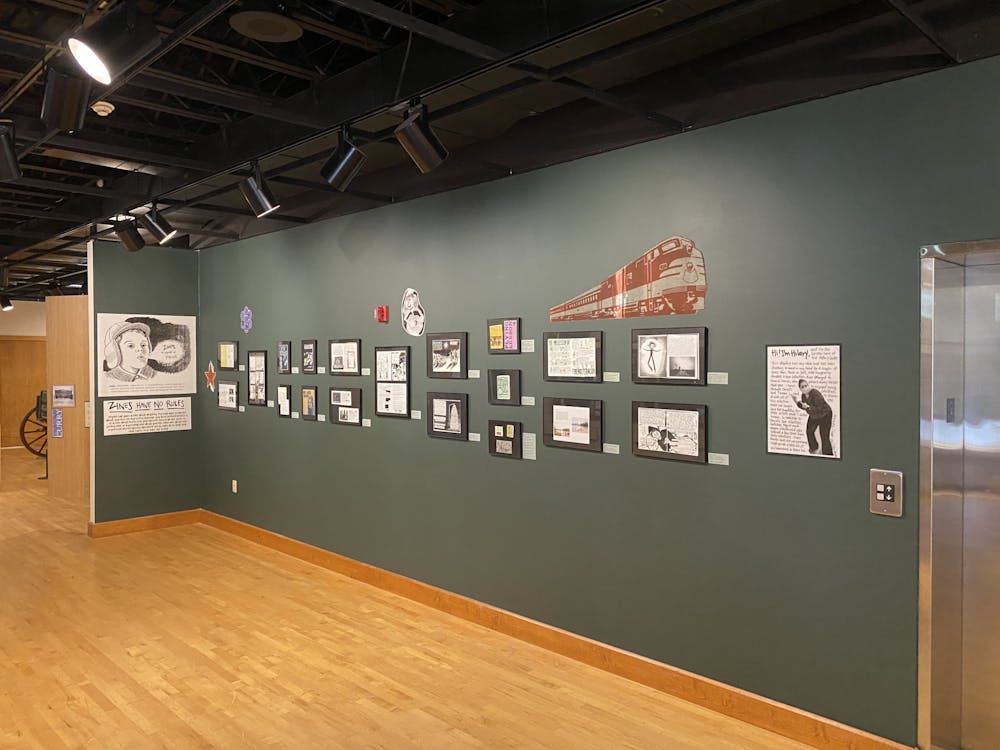The Monroe County History Center is composed of one visually demanding exhibit after another. From a stuffed bear named Monroe to vehicles documenting the local history of transportation, it’s easy to be swept up in the spectacle.
But in the smaller Hill Gallery, which has historically exhibited artworks, museum attendees can explore a niche community of artists and the subculture surrounding their work. “Zines: A Culture in Focus,” which opened June 28 and will continue through Oct. 22, showcases a number of locally-made zines that offer a glimpse into the personal lives of Monroe County residents.
Zines don’t share a formal set of characteristics. The exhibit’s abstract opens with “ZINES HAVE NO RULES” in bold lettering and encourages viewers to make zines of their own on any subject they can think of.
Hilary Fleck, the exhibit’s curator, emphasized the art form’s lack of boundaries. She said the connection to magazines can be misleading, as “magazine” connotes a large-scale publication and a specific medium, whereas a zine is self-published and isn’t tied to a specific manner of presentation.
“I’ve seen zines that are literal trash that has been set on fire with words printed on it,” Fleck said. “It can literally be anything and it’s really hard to define something that can be anything.”
While the definition of a zine isn’t concrete, they’re generally self-published, short-form magazine-like works. The museum received some of the zines in a donated collection, and some are on loan, and Fleck said the zines on display represent a little less than half of the total number the museum has due to space considerations.
Fleck said zines began as a form of amateur journalism written mostly by members of marginalized groups as a way of making their voices heard and were particularly important in the punk music scene. They were important in disseminating information among these groups, but the subject and gravity of this information could vary wildly, from news to film reviews.
A number of the zines on display at the History Center simply tell personal stories of the area. One documents a summer bike trip. Another, a series of the author’s boyfriends, good and bad. Fleck described these zines as an important documentation of their creators’ lives and stories.
“They’re traces of these communities that are tangible,” Fleck said. “Not every culture has tangible artifacts that represent that community, and I see the zines to be a tangible remnant of them that we can share.”
Since they can be anything and anyone can create them, zines don’t bar any particular perspective from being shown, making the field of zines incredibly varied in subject matter. Their history of counterculture and locality means they are some of the most meaningful relics we have to show the intimacies of life in a particular community at a specific time, Fleck said.
“I want people to come to the History Center and feel seen in some way,” Fleck said. “I’m hoping that this showcases that these people are people just like you and me, and this is how they choose to express themselves, and I’m hoping that everyone sees a little bit of themselves somewhere.”




